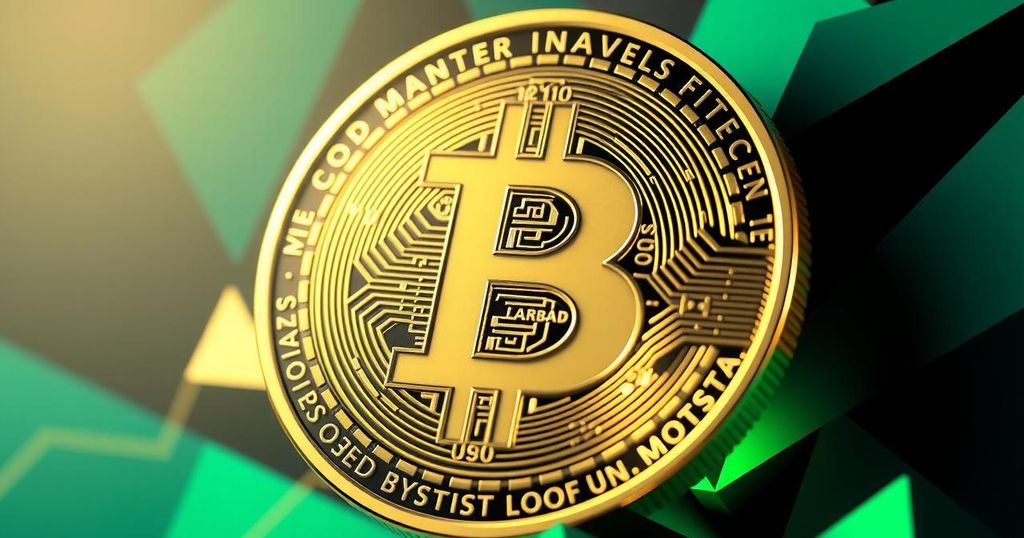Bitcoin Jumps As Federal Reserve Keeps Interest Rates Steady
Bitcoin gained 2% after Federal Reserve’s decision to hold interest rates steady. The Fed maintained a rate range of 4.25% to 4.5% due to economic uncertainty, influenced by President Trump’s tariffs. Inflation appears to be cooling, while the US labour market remains strong. Investors anticipate possible rate cuts next month as labour markets show some strength despite tariff challenges.
Bitcoin experienced a notable surge of approximately 2% following the Federal Reserve’s recent decision to keep interest rates steady. Currently trading at around $96,000, this increase has been part of an impressive 22% growth over the past month. Investors had anticipated that the Fed would maintain rates, amid ongoing economic uncertainties influenced by U.S. President Donald Trump’s tariffs.
On Wednesday, the Fed confirmed its target range of 4.25% to 4.5% for interest rates, marking its fourth consecutive meeting without change. Despite increasing pressure from Trump urging for rate cuts, the Fed continued to take a cautious approach. They attributed this decision to the increased economic uncertainty and hinted at a data-driven strategy for assessing future adjustments.
In their statement, the central bank mentioned the impact of fluctuating net exports on economic indicators. They noted that, despite the hurdles, the economic activity appears to be expanding steadily. The Fed plans to thoroughly evaluate incoming data before making further changes to the federal funds rate, considering both potential inflation and unemployment risks.
Post-announcement, Bitcoin saw a swift uptick of about 1.5% in just an hour. Over the preceding week, the cryptocurrency’s value has appreciated roughly 22%, indicating a strong market response. Meanwhile, economists suggest that the Fed finds itself in a tough nexus where Trump’s tariffs may inflict inflationary pressure in the U.S., challenging the equilibrium of economic growth.
If the Fed decides to maintain higher interest rates for an extended period to mitigate inflation risks associated with tariffs, it could inadvertently slow down economic growth by dampening consumer spending, leading to job losses. Interestingly, while consumer sentiment has taken a hit due to tariffs, the job market has remained relatively robust. The U.S. added 177,000 jobs in April, exceeding predictions, while the unemployment rate held steady at 4.2%, according to recent data from the U.S. Bureau of Labor Statistics.
Inflation, on the other hand, appears to be coming down. The core measure of the Personal Consumption Expenditures Price Index (PCE), which excludes food and energy prices, showed a 2.6% rise over the last 12 months as of March. This indicates a cooling trend from the prior month’s 3% annual increase, bringing the situation closer to the Fed’s target of 2%.
Looking ahead to June, traders are now speculating there is a 28% probability the Fed might enact a rate cut at its next meeting, as per CME FedWatch data. Importantly, the tariffs implemented by Trump—especially the hefty 145% levies on Chinese goods—continue to complicate the economic landscape.
In light of these tariffs, U.S. Treasury Secretary Scott Bessent is expected to meet Chinese officials this week in Switzerland. This could signify a potential shift towards easing trade tensions. Additionally, the People’s Bank of China has also taken steps to bolster their struggling economy by cutting lenders’ reserve requirements and reducing benchmark interest rates.
Amidst prolonged tariff-induced volatility last month, investors were notably relieved with Trump’s announcement of a 90-day halt on many reciprocal tariffs. Now that the deadline of July 8 is approaching, the market remains on edge, hoping for fruitful negotiations that might lead to trade agreements.




Post Comment